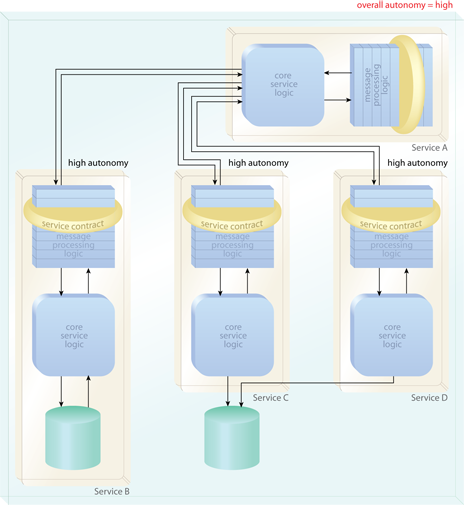SOA Patterns > Composition Implementation Patterns > Composition Autonomy
Composition Autonomy (Erl)
How can compositions be implemented to minimize loss of autonomy?

Problem
Composition controller services naturally lose autonomy when delegating processing tasks to composed services, some of which may be shared across multiple compositions.
Solution
All composition participants can be isolated to maximize the autonomy of the composition as a whole.
Application
The agnostic member services of a composition are redundantly implemented in an isolated environment together with the task service.
Impacts
Increasing autonomy on a composition level results in increased infrastructure costs and government responsibilities.
Principles
Service Autonomy, Service Reusability, Service Composability
Architecture
Composition

By grouping the services of a composition into a separate deployment environment, the collective autonomy is maximized because the implementation is dedicated to the composition, and none of the services are otherwise shared. Services C and D in particular benefit from this new implementation as they are no longer subject to shared access.
Related Patterns in This Catalog
Agnostic Context, Agnostic Context, Atomic Service Transaction, Inventory Endpoint, Multi-Channel Endpoint, Redundant Implementation, Service Data Replication
Related Service-Oriented Computing Goals
This page contains excerpts from:
SOA Design Patterns by Thomas Erl
(ISBN: 0136135161, Hardcover, Full-Color, 400+ Illustrations, 865 pages)
For more information about this book, visit www.arcitura.com/books.
